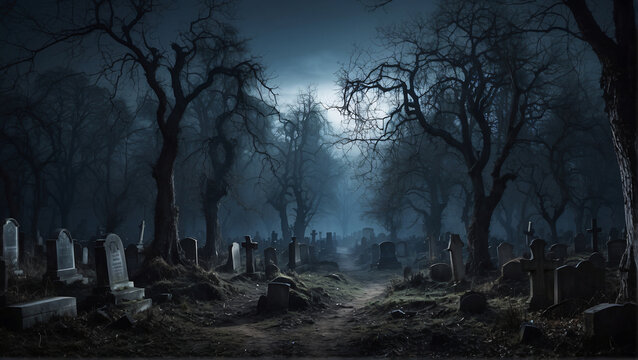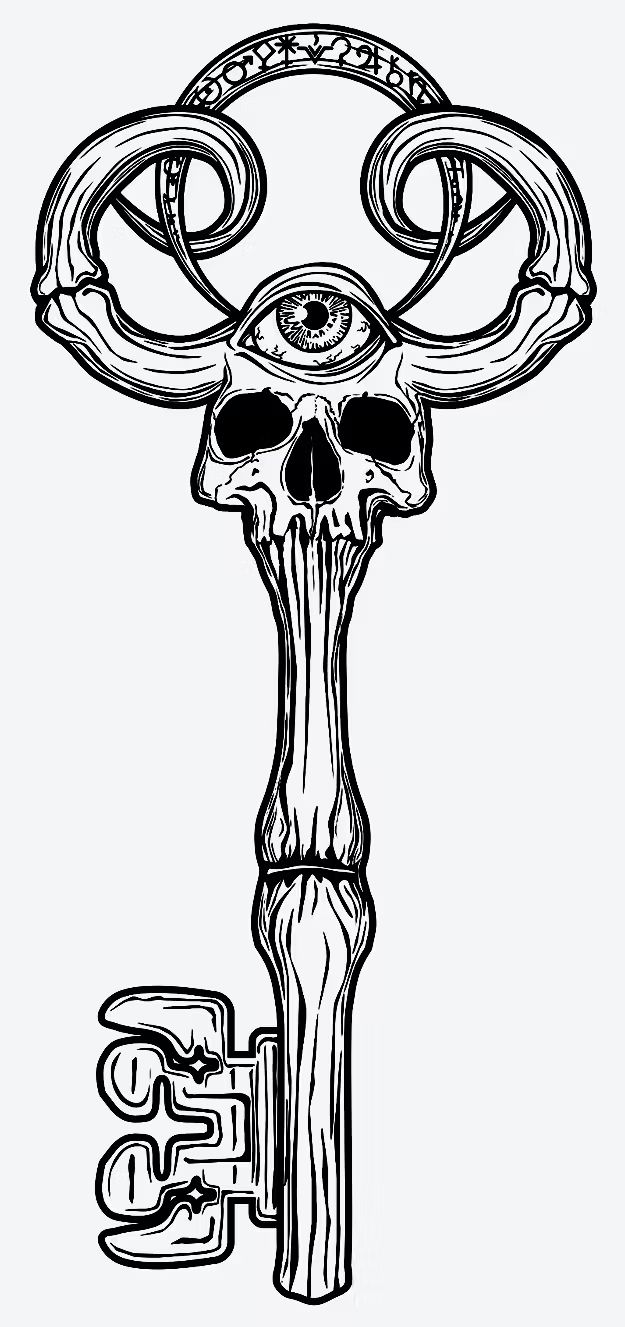Panora, the Last Guide
(a.k.a. St. Panora (Matriarchy))
Everyone dies. This is known. To guide the dead into the afterlife is Panora, the Last Guide.
Divine Domains
Death, the dead, time, and passages (gates and doors)
Divine Symbols & Sigils
A closed door or a skeleton key.
Tenets of Faith
Panora follows a simple but unbending code of beliefs:
- Everything that lives will someday die.
- Not every soul is worthy of passing through the Last Gate to the afterlife.
- The unworthy must be punished, in life and in death.
- The Last Gate opens only in one direction; to pass through is final.
Physical Description
General Physical Condition
Panora is dead. Her body is that of a corpse, desiccated and slowly corrupting by rot. Only the divine power that fuels her keeps her body from falling apart.
Apparel & Accessories
Panora wears robes of black and white. Her head is covered by a mourner's hood.
Specialized Equipment
Panora carries her sacred weapon, the Spade of Judgement, in her right hand. The Spade is a wide-bladed spear with a stone blade on one end which is used to punish the unworthy, and a curved silver mancatcher on the other end, which is used to guide the deserving to their final reward. Around her waist she carries a set of keys that open the gates to the afterlife. Upon her back is chained the Book of the Dead, which contains the name of everything and everyone that has died or will die.
Mental characteristics
Personal history
The first mention of Panora comes from the gospels of Eoa written in the First Age, in which the following is written:
"So as the long days of summer passed, and the first of the High Races grew old, there were some that became feeble from age. They delighted not in life but withered and faded, but they did not end. These people sought an audience with their Emperor and cried out with one voice, 'We have lived too long in this world. We need to end from this place, even if it is to oblivion.'
"Eoa gazed at them with compassion and sorrow. 'I can end your life here,' he declared, 'but cannot promise that you will continue elsewhere. Do you still ask for this?'
"One woman, whose name is now unknown, came forward. She was thin as reed, with wrinkled skin and swollen joints that bent her over nearly double as she hobbled to stand before her lord. 'Take me,' she begged, 'no matter the cost.'
"Eoa took her into his secret chambers and there took her life from her, and fashioned from her dead flesh one who could guide the people from this life unto the next, if they be worthy. And he called his creation Panora, and she went among the people and took those whose time had come to an end and judged them, guiding the worthy to the Last Gate and punishing the unworthy in her way."
In the Third Age, two famous Rosalind playwrights Whelk and Hightower wrote A Paramour for Panora, a tragic play about a soldier who sees Panora on a battlefield and falls in love with her. In the play, he commits a growing number of murders in order to see her again, calling each killing an "endearment of his love for her". In the final act, the soldier realizes that in order to be with his love forever, he must kill himself, which he does, but Panora judges him unworthy to pass on and imprisons him in his bones. As she turns to leave, the now dead soldier begs for her to stay with him and love him, but she simply replies that he was never her lover, just her job.
While not their most popular play, A Paramour for Panora is considered one of their finest, exploring as it does the thin line between affection and obsession. Religious scholars of the Age commended the play for its accurate portrayal of Panora, not as sultry murderess or seductive assassin of men, but simply as a godling consigned to perform a function.
Sexuality
Panora, as a dead creation, has generally been portrayed as asexual. However, a number of minstrels during the latter part of the Second Age and throughout the Third Age have portayed her as a seducer of men, enticing them into their deaths. This still remains a relatively popular image of Panora in stories and ballads, but is universally known to be fiction.
Personality Characteristics
Motivation
Panora's primary duty is to judge the souls of the dead when they pass from the living world. If she judges them worthy, she shows them to the Final Gate and unlocks it so they may walk through to their afterlife. If they are judged unworthy, she imprisons their souls in their bones, doomed to remain. While many of these unworthy rest silently within their remains, hoping for eventual redemption or oblivion, some become restless and turn into the undead.
Likes & Dislikes
As a divine construct built from the slain corpse, Panora does not feel emotions like the vital living do. As such, she does not feel happy or sad, angry or jealous, joyous or loved. Without these feelings, she does not "like" or "dislike" any particular thing.
Panora does wonder what lies on the other side of the Last Gate that she opens for those she judges, knowing that once she has ushered the last souls of the Lands of Legend through it, her purpose will be fulfilled and her divine spark will snuff out, causing her end so she will never see the lands that come after death.
Social
Hobbies & Pets
It is believed that crows are her particular sacred animal, and that they can perform the function of taking souls from the newly dead to Panora for judgement. Because of this, many people believe that a gathering of crows outside a person's home is an omen that they will die soon. In some parts of the Lands of Legend, killing a crow is considered taboo, as it might bring the attention of Panora upon the killer. However, in other places, killing crows is actively encouraged, to keep death at bay.

Divine Classification
Godling
Honorary & Occupational Titles
The Last Guide, The Final Judge, Guide of the Dead, Keeper of the Last Gate
Children
Sex
Female
Gender
Woman
Eyes
black with a white light within
Hair
Unknown
Skin Tone/Pigmentation
Pale and rotting
Height
9 feet tall
Holy Symbol of Panora



Comments